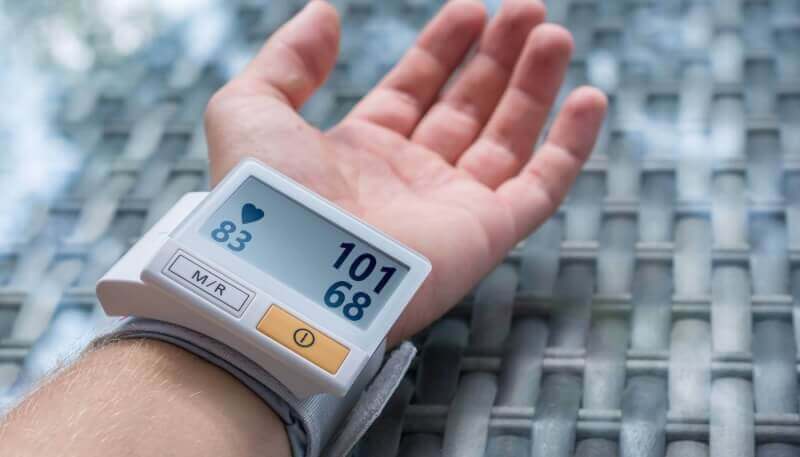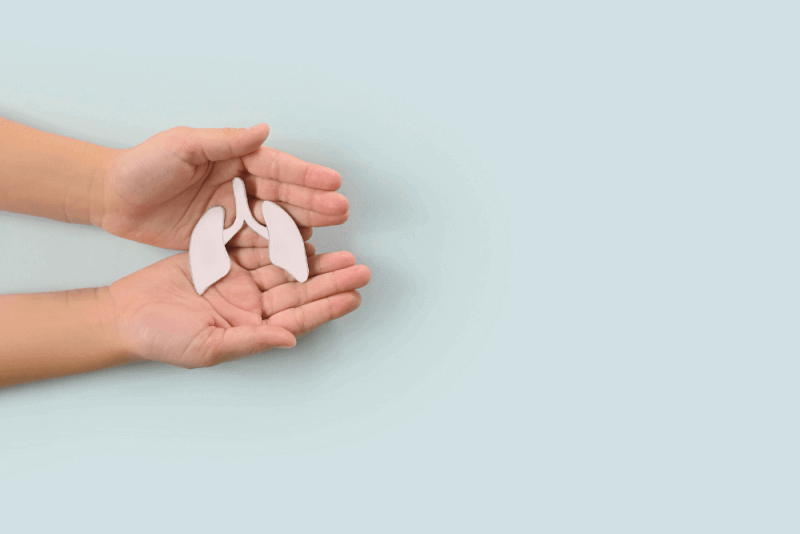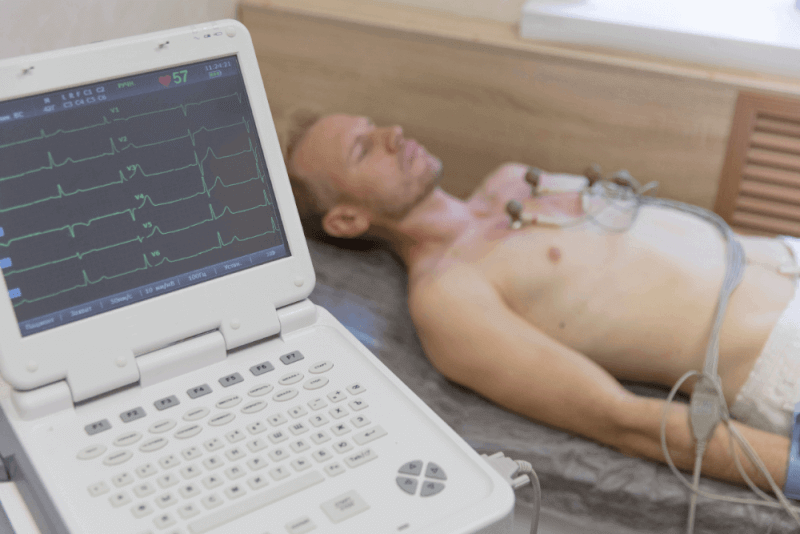Blood pressure is one of the body's most vital mechanisms. This is because blood must be transported to all tissues so that cells can get enough oxygen and other nutrients. This transportation process is carried out by the blood moving through the veins thanks to the beating of the heart. Blood pressure, also known as blood pressure, is the pressure exerted by the blood on the vessel walls during blood transport. Various health problems can cause this pressure to rise or fall.
Two different values are obtained when measuring blood pressure. The first of these values is systolic blood pressure, also known as large blood pressure. This value expresses the pressure of the blood passing through the artery against the vessel wall as the heart beats. The other value is small blood pressure, which refers to the pressure of the blood against the vessel wall during the resting phase of the heart after contraction. Small blood pressure, also known as diastolic blood pressure, and large blood pressure give many clues about the general health of people, especially cardiovascular health.
What is the Normal Value of Small Blood Pressure?
A healthy small blood pressure is around 80 mmHg. If there is a value above this value, then we can talk about high blood pressure, also known as hypertension. If the small blood pressure is below 60 mmHg, then we are talking about low blood pressure, i.e. hypotension.
How to Measure Small Blood Pressure?
The working logic of the sphygmomanometer used to measure blood pressure values is as follows. First, the blood flow is cut off with the help of a cuff. Afterwards, the blood flow is restored and the values at the time of the first pressure are determined. While the cuff is slowly loosened, the pulse is also measured with a stethoscope. The pulse heard during the loosening of the cuff indicates high blood pressure. The pressure measured at the moment the flow is interrupted determines the small blood pressure value.
Blood pressure is measured with conventional sphygmomanometers by cutting off the blood flow in the vessels in the biceps muscles. However, nowadays, more electronic blood pressure monitors are used to measure blood pressure from the wrist.
What Does It Mean to Have Low Small Blood Pressure?
Blood pressure values are usually monitored by monitoring both small and large blood pressure values together. However, low small blood pressure isolated from large blood pressure is recognized as a harbinger of some health problems. The main factors that cause low small blood pressure are the following.
Medication Use
If a person is taking medication that causes relaxation of blood vessels, then they may have low blood pressure.
Old Age
Hardening of the veins with advancing age is seen as a normal process. With this hardening, the vessels lose their elasticity. This change in the blood vessels can lead to a decrease in the pressure reaching the vessel wall and thus to low blood pressure.
Nutrition Habits
Arteriosclerosis can also occur in people who consume too much salt as part of their daily eating habits. This naturally leads to low levels of small blood pressure.
Heart Diseases
Low small blood pressure is also expected in diseases related to the pumping functions of the heart, such as heart valve disorders or heart failure.
Dehydration
In cases such as diarrhea, blood loss or excessive sweating, and in cases such as excessive fluid loss and failure to replace the lost fluid, there is a decrease in the amount of blood and a decrease in the pressure on the vessel wall.
Symptoms of Minor Low Blood Pressure
When small blood pressure shows low values, the symptoms felt in people are as follows.
- Dizziness
- Fatigue
- Visual disturbances,
- Darkening in the eyes
- Nausea
Treatment of Minor Low Blood Pressure
The main treatment for patients with low small blood pressure is fluid replacement. In this way, it is aimed to increase the amount of blood fluid and increase the pressure on the vessel wall. If fluid supplementation is insufficient, patients are given the necessary medication to support the heartbeat.
What Does a Small High Blood Pressure Mean?
A small blood pressure of 90 mmHg and above may indicate minor hypertension. Although small blood pressure and large blood pressure are usually measured high together, in some cases small blood pressure can also be high on its own. The causes of small blood pressure isolated from large blood pressure are as follows.
Hypertension
The causes of hypertension, one of the most common health problems in the society, are not fully known. However, this disease is often associated with certain health problems and these patients have both high small and large blood pressure.
Obesity
In people with too much body weight, the pressure in the blood vessels increases. This leads to an increase in small blood pressure.
Kidney Diseases
The kidneys are the main organ responsible for regulating the amount of blood fluid. For this reason, any disease that disrupts the function of the kidneys to filter the blood also causes an increase in small blood pressure. Because in these cases there is an increase in blood fluid. Increased blood fluid puts more pressure on the vessel walls.
Alcohol and Caffeine Consumption
Caffeine and alcohol cause blood pressure to rise. In case of cessation of consumption, blood values are normalized.
Medication Use
Amphetamine-containing drugs, birth control pills, antidepressants and nonsteroidal anti-inflammatory drugs cause blood pressure to rise.
Symptoms of Small High Blood Pressure
The general symptoms seen in people with high small blood pressure are as follows.
- Headache
- Dizziness
- Reddening of the face,
- The presence of blood stains in the eyes,
- Nosebleeds
Treatment of Minor High Blood Pressure
In order to lower small blood pressure, patients should first exercise regularly. They also need to pay attention to their diet and follow the recommended regimen for hypertension. In addition, methods such as treating diseases that cause high blood pressure are also followed. In case of extreme blood pressure elevations, some medications are used for emergency intervention.
Methods for raising and lowering small blood pressure
In cases where small blood pressure is not low enough to affect patients' lives, it is possible to raise it to normal levels with a few small changes in lifestyle. Among the things that can be done for this are the following.
- Consume more water
- Not consuming alcohol
- Establishing a diet consisting of a variety of foods.
- Increasing the amount of salt consumed
- Moving slowly when standing up from a lying or sitting position.
- Not crossing your legs while sitting.
- Take a few deep breaths before getting out of bed.
- If symptoms occur while standing, the thighs should be squeezed with scissors.
- Leaning forward when climbing stairs.
- Drinking coffee or tea.
In addition to the treatment of people with high small blood pressure values, making some lifestyle changes helps to support the treatment. In addition, in patients without many symptoms, lifestyle changes alone are generally sufficient. Here is what patients can do for this.
- Maintaining ideal weight
- Regular physical activity
- Restriction of salt consumption
- Avoiding alcohol consumption
- Reducing fruit and vegetable pulp consumption
- Reduction of born fat and total fat
- Smoking cessation
- Avoiding stress
- Regular medical check-ups
Risks of small blood pressure
If the small blood pressure value is below or above normal, patients are at increased risk of various complications. Other health problems that may be caused by low small blood pressure include the following.
- Dizziness
- Fainting
- Injury due to a fall
- In severe cases, various damages to the brain and heart due to insufficient oxygen supply to the body
If the small blood pressure value is high, the following are among the complications that can be seen in patients.
- Heart failure
- Heart enlargement
- Narrowing of the vessels supplying the heart
- Heart attack as a result of blockage of the blood vessels supplying the heart
- Brain hemorrhage
- Paralysis
- Narrowing and blockage of brain vessels
- Kidney disease
- Enlargement and rupture of large vessels
- Visual impairment and loss
Blood Pressure Values by Age
| Age Range (Years) | Blood Pressure During Heartbeat (Systolic - mmHg) | Blood Pressure at Rest (Diastolic - mmHg) |
|---|---|---|
| 1-12 | 90-110 | 60-70 |
| 13-18 | 95-120 | 65-80 |
| 19-24 | 105-135 | 70-85 |
| 25-29 | 110-140 | 75-85 |
| 30-34 | 110-140 | 75-85 |
| 35-39 | 115-145 | 80-90 |
| 40-44 | 115-145 | 80-90 |
| 45-49 | 115-145 | 80-90 |
| 50-54 | 120-150 | 80-90 |
| 55-59 | 120-150 | 80-90 |
| 60-64 | 125-155 | 85-95 |
| 65-69 | 125-155 | 85-95 |
| 70-74 | 130-160 | 85-95 |
| 75-79 | 130-160 | 85-95 |
| 80+ | 130-160 | 85-95 |













